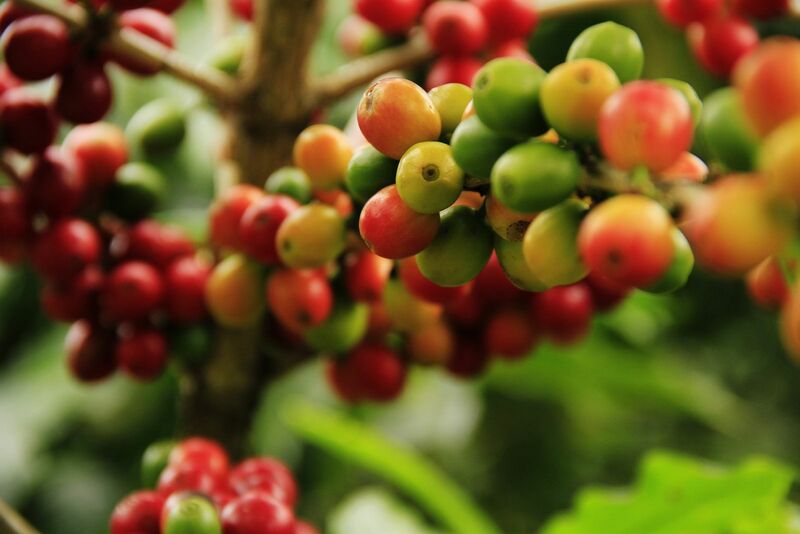
Dec arabica coffee (KCZ23) on Monday closed up +6.95 (+4.07%), and Jan ICE robusta coffee (RMF24) closed down -16 (-0.63%).
Coffee prices on Monday settled mixed. Arabica coffee on Monday rallied sharply after the weekend rain forecast for Brazil failed to materialize. Below-normal rain in Brazil could curb coffee yields and is supportive of prices. Somar Meteorologia reported Monday that Brazil's Minas Gerais region received 5.9 mm of rain in the past week, or 12% of the historical average. Minas Gerais accounts for about 30% of Brazil's arabica crop.
Robusta coffee was under pressure Monday on signs of increased supplies from Uganda, the world's fourth-largest robusta producer. The Uganda Coffee Development Authority reported today that Uganda Oct coffee exports rose +3.4% y/y to 470,080 bags.
Last Thursday, arabica coffee rallied to a 5-month high, and robusta coffee climbed to a 2-month high on shrinking ICE coffee inventories. ICE-monitored arabica coffee inventories last Thursday fell to a 24-year low of 289,699 bags. Meanwhile, on Monday, ICE-monitored robusta coffee inventories were at 3,931 lots, modestly above the record low of 3,374 lots posted on August 31.
In a supportive factor for robusta coffee, Vietnam's agriculture department on November 3 projected Vietnam's coffee production in the 2023/24 crop year could drop by -10% to 1.656 MMT, the smallest crop in four years, due to drought. Also, Vietnam's General Department of Customs reported on November 8 that Vietnam's Oct coffee exports fell -14.2% m/m and -48.8% y/y to 43,725 MT and that coffee exports in the first ten months of this year (Jan-Oct) fell -10.7% y/y to 1.3 MMT. Vietnam is the world's largest producer of robusta coffee beans.
A bearish factor for coffee prices is an increase in Brazil's coffee exports after exporter group Cecafe reported last Tuesday that Brazil's Oct green coffee exports jumped +24% y/y to 4 million bags.
A negative factor for coffee was the projection from Rabobank on November 3 that due to beneficial weather boosting coffee yields, Brazil's coffee exports in the 12 months ending June 2024 could increase as much as +18 % y/y to 42 million bags.
The U.S. Climate Prediction Center on June 8 declared an El Nino weather event, which is likely to be supportive of coffee prices. An El Nino pattern typically brings heavy rains to Brazil and drought to India, negatively impacting coffee crop production. The El Nino event may bring drought to Vietnam's coffee areas late this year and in early 2024, according to an official from Vietnam's Institute of Meteorology, Hydrology, and Climate Change.
Global coffee exports are shrinking as the International Coffee Organization (ICO) on September 14 reported that global coffee exports during Oct-Jul were down -5.7% y/y at 103.736 mln bags. Cecafe reported on October 11 that Brazil's Sep arabica coffee exports fell -20% y/y to 2.4 million bags, the lowest for that month in 6 years. However, Brazil's Sep robusta exports rose more than fourfold to 624,999 bags. Brazil is the world's largest producer of arabica coffee and the second-largest producer of robusta coffee.
The USDA Foreign Agricultural Service forecasted in its June biannual report, released on June 22, that world coffee production in 2023/24 will increase +2.5% y/y to 174.3 million bags, with a +6.9% increase in arabica production to 96.3 million bags, and a -2.4% decline in robusta production to 78.0 million bags. USDA FAS forecasts that 2023/24 Brazilian coffee production will rise by +14.5% to 67.9 million bags, while Vietnam's 2023/24 production will fall -3.5% to 30.2 million bags. USDA FAS forecasts that 2023/24 ending stocks will edge higher by +0.8% to 31.8 million bags from 31.6 million bags in 2022-23.
Illustrating a tight coffee supply picture in 2022/23, the ICO said the global 2022/23 coffee market deficit widened to -7.3 mln bags from a -7.1 mln bag deficit in 2021/22. ICO reported that 2022/23 global coffee production increased +1.7% y/y to 171.27 mln bags, but 2022/23 global coffee consumption increased +1.7% y/y to a larger 178.53 mln bags.
On the date of publication, Rich Asplund did not have (either directly or indirectly) positions in any of the securities mentioned in this article. All information and data in this article is solely for informational purposes. For more information please view the Barchart Disclosure Policy here.






